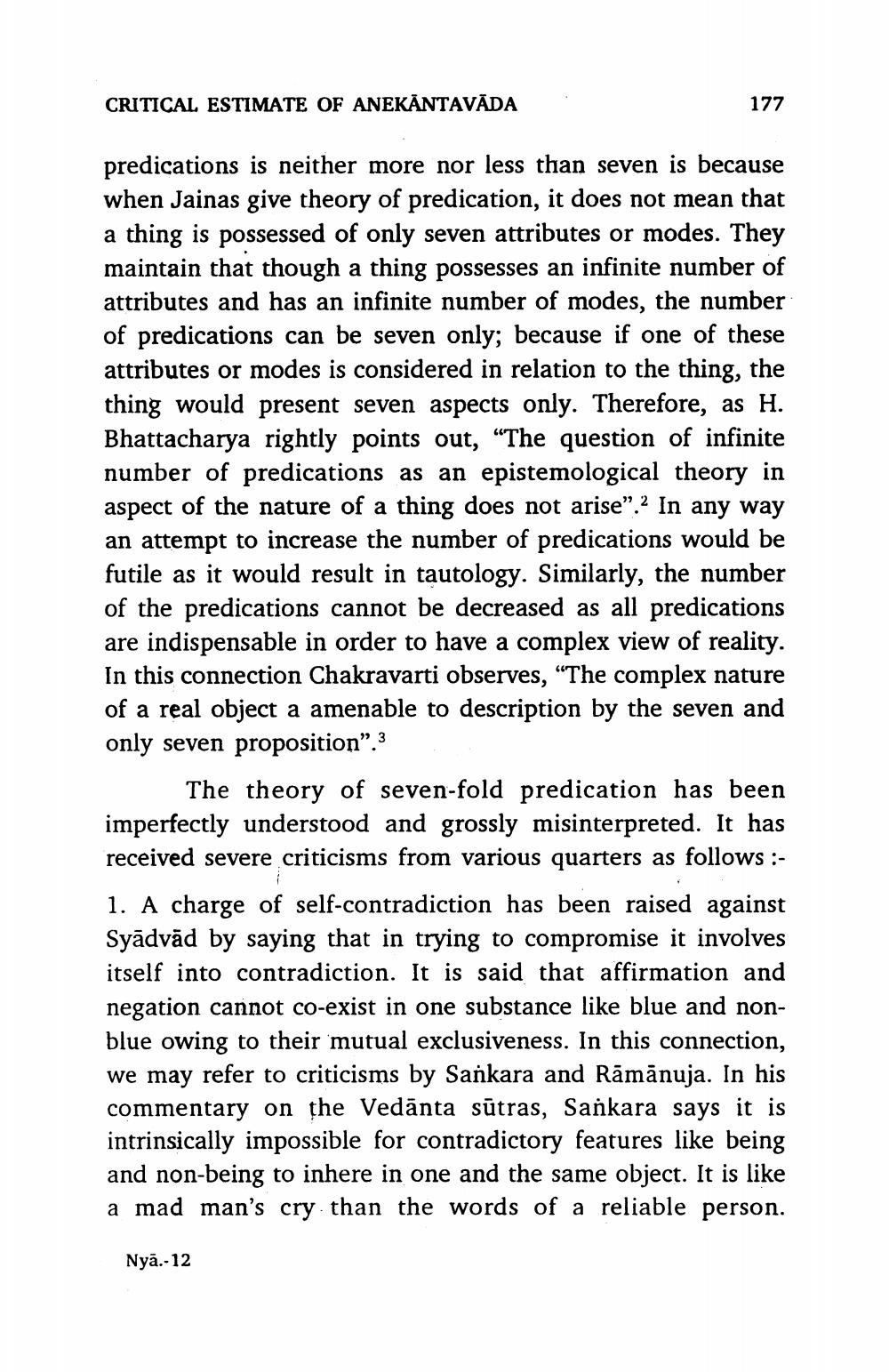________________
CRITICAL ESTIMATE OF ANEKANTAVĀDA
177
predications is neither more nor less than seven is because when Jainas give theory of predication, it does not mean that a thing is possessed of only seven attributes or modes. They maintain that though a thing possesses an infinite number of attributes and has an infinite number of modes, the number of predications can be seven only; because if one of these attributes or modes is considered in relation to the thing, the thing would present seven aspects only. Therefore, as H. Bhattacharya rightly points out, "The question of infinite number of predications as an epistemological theory in aspect of the nature of a thing does not arise".2 In any way an attempt to increase the number of predications would be futile as it would result in tautology. Similarly, the number of the predications cannot be decreased as all predications are indispensable in order to have a complex view of reality. In this connection Chakravarti observes, "The complex nature of a real object a amenable to description by the seven and only seven proposition".3
The theory of seven-fold predication has been imperfectly understood and grossly misinterpreted. It has received severe criticisms from various quarters as follows:1. A charge of self-contradiction has been raised against Syadvād by saying that in trying to compromise it involves itself into contradiction. It is said that affirmation and negation cannot co-exist in one substance like blue and nonblue owing to their mutual exclusiveness. In this connection, we may refer to criticisms by Sankara and Rāmānuja. In his commentary on the Vedanta sūtras, Sankara says it is intrinsically impossible for contradictory features like being and non-being to inhere in one and the same object. It is like a mad man's cry than the words of a reliable person.
Nya.-12




